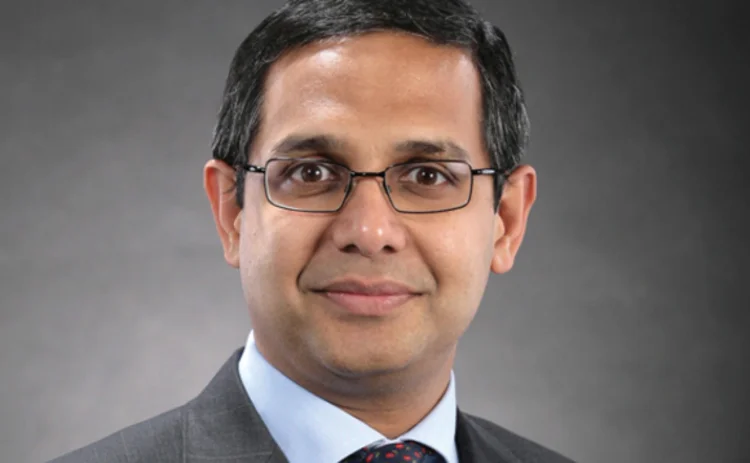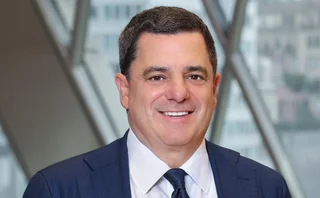
Private Bank of the Year: Citi Private Bank
Asia Risk awards 2011 winner: Citi Private Bank – Private Bank of the Year

Citi Private Bank retained this award in large part due to its fine-tuning of business activities following an overhaul of its sales and compensation models during the previous awards period. This enabled the private bank to grow its assets under management (AUM) in the region to $193 billion by the end of the second quarter of this year, up from $179 billion at the end of 2010, and up from $165 billion in 2009.
One of Citi Private Bank’s big new initiatives included the roll-out of hedge fund and mutual fund platforms in Asia during the past year. Citi distributes a large number of funds: for example, there are 1,500 listed on the bank’s mutual funds platform, all offered by third parties. The new platforms streamline the buying of positions and execution of trades, but most innovative is the amount of research that goes into rating best-of-breed funds, and using this information to form the basis of portfolios for clients.
Debashish Dutta Gupta, investments head for Asia in Singapore at Citi Private Bank, says clients previously did not receive advice on “high conviction” funds from private banks. Although it is common to offer such investment outlooks for other asset classes, such as equities or commodities, advice for funds has generally been ad hoc. Citi Private Bank’s new approach poses some risks – for example, the removal of a recommendation for a hedge fund could cause tensions with prime brokerage – but Gupta says discussions within Citi are “mature enough” that “they respect and understand our decisions”.
Fee structure
Gupta adds that the private bank only charges on an advisory basis, meaning there is no conflict of interest as might occur if the bank was actively managing the client’s money. “Therefore, we’re judged by the client purely on the basis of the performance of this portfolio, as opposed to anything else,” Gupta says. “Asians trade mutual funds much more than anyone else, so for them this is particularly attractive, especially not having to pay switching costs, plus in general in this region investors are loath to pay inception fees.”
One of the biggest successes of the ties between the investment bank and the private bank is in the area of initial public offerings (IPOs), which is of particular relevance in Asia where many family businesses are conducting their first IPOs. “The private bank probably already has a relationship with the client, and the manager gets involved in that dialogue when the client is hatching their plans and brings the investment bank into the discussion,” says Bassam Salem (below), Asia-Pacific CEO.  Citi Private Bank also acts as a powerful distribution channel for IPOs to its own client base and has been involved in several of this year’s major IPOs in Asia – both for wealth structures and distribution – including a major commodities company that went public globally.
Citi Private Bank also acts as a powerful distribution channel for IPOs to its own client base and has been involved in several of this year’s major IPOs in Asia – both for wealth structures and distribution – including a major commodities company that went public globally.
Though Citi Private Bank declined to name its clients, the biggest commodities IPO of the year was the listing of Glencore in the London and Hong Kong bourses, with Citi as a lead arranger. The listing was tipped to make several of Glencore’s executives and traders billionaires, with corresponding wealth management needs. Citi Private Bank did say it teamed up with its investment bank on a $500 million Asian transport IPO, securing a mandate to manage the owner’s wealth post-IPO, and another transaction involving the IPO of a Chinese industrials company, with the private bank partnering the investment bank to help the owners secure more capital for growth and develop their personal wealth legacies.
Citi also appointed Ted Teo at the end of March this year to co-ordinate activities between the investment bank and private bank, or act as a “traffic warden” according to Gupta.
The private bank also helped clients look at portfolios with risk-return in mind. The bank offered a trade mixing global equity index protection with a contingency on gold price increases to make the put cheaper – a worst-of Standard & Poor’s 500 index put/gold ETF call. “Buying a put on, for example, the S&P index, contingent on an increase in the gold price, would not normally make the option any cheaper because they are so correlated negatively, but we’ve noticed in the current environment it can actually make the put over 50% cheaper,” says Gupta. “From mid-Q4 last year we’ve been telling clients to go underweight equity and gold and buy long-duration government bonds. It seemed like a crazy trade at the time, but it has turned out to be most prescient.”
Only users who have a paid subscription or are part of a corporate subscription are able to print or copy content.
To access these options, along with all other subscription benefits, please contact info@risk.net or view our subscription options here: http://subscriptions.risk.net/subscribe
You are currently unable to print this content. Please contact info@risk.net to find out more.
You are currently unable to copy this content. Please contact info@risk.net to find out more.
Copyright Infopro Digital Limited. All rights reserved.
As outlined in our terms and conditions, https://www.infopro-digital.com/terms-and-conditions/subscriptions/ (point 2.4), printing is limited to a single copy.
If you would like to purchase additional rights please email info@risk.net
Copyright Infopro Digital Limited. All rights reserved.
You may share this content using our article tools. As outlined in our terms and conditions, https://www.infopro-digital.com/terms-and-conditions/subscriptions/ (clause 2.4), an Authorised User may only make one copy of the materials for their own personal use. You must also comply with the restrictions in clause 2.5.
If you would like to purchase additional rights please email info@risk.net
More on Awards
Market liquidity risk product of the year: Bloomberg
Bringing clarity and defensibility to liquidity risk in a fragmented fixed income market
FRTB (SA) product of the year: Bloomberg
A globally consistent and reliable regulatory standardised approach for FRTB
Best use of cloud: ActiveViam
Redefining high-performance risk analytics in the cloud
Best use of machine learning/AI: ActiveViam
Bringing machine intelligence to real-time risk analytics
Collateral management and optimisation product of the year: CloudMargin
Delivering the modern blueprint for enterprise collateral resilience
Flow market-maker of the year: Citadel Securities
Risk Awards 2026: No financing; no long-dated swaps? “No distractions,” says Esposito
Pricing and analytics: fixed income – Quantifi
Quantifi delivers high-performance, transparent and adaptable pricing and risk analytics for fixed income and credit markets
Derivatives house of the year: Citi
Risk Awards 2026: Rev up, RWAs down, as US bank gets back on track (with added XiNG and XiP)








